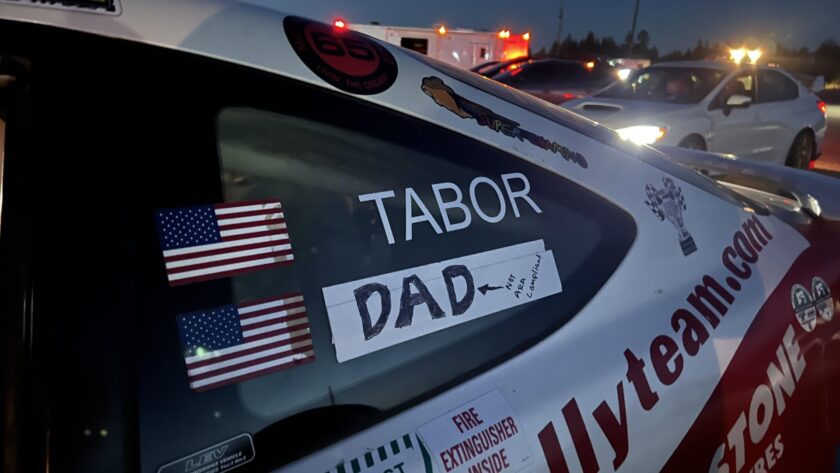For the past couple of years now, there has been much hand-wringing and gnashing of teeth by the team owners about the cost of racing, how bad the economy is, and how they might not be able to make it if the league decides to [insert change to status-quo here]. The new chassis was due to be released originally in 2011, but foot-dragging and cost complaints pushed that process back to process back a year. We looked forward to having chassis competition again, but fear that the costs would escalate and result in a low to mid teens sized grid was used as leverage to select a single manufacturer. No surprise that it ended up being Dallara, but that’s a topic for another time.
no images were found
The new chassis (a year late) was expected to be a base onto which other manufacturers could place a shell they felt was aerodynamically advantageous. Whinging about the costs of having to buy a new chassis AND aero kits delayed those until 2013.So what’s been the result? The result is a bumper crop of teams and drivers for 2012. So many, in fact, that there’s been talk about limiting the number of entries at some events. As of right now, there are reported to be 27 engine leases signed for 2012, and it’s likely that we could be looking at a final number of near 30 if the teams have their way. While I’m excited that we’re seeing so many committed to IndyCar racing, I now feel like we were duped by the teams. After all the complaints about how much it was going to cost to purchase new chassis and all the spare parts that would be required for that chassis, to now have the largest full-season field this century seems fishy.
My real concern doesn’t lie with our current situation. We’re actually sitting pretty good. Getting engines to all who wish to participate might be tough, but the fact that there’s no shortage of folk who WANT to participate and are willing to put up the money to do so is a huge positive for the series. What concerns me is the future. With all of the complaining about budgets and costs now, when there’s a record number of entrants, what happens when the economy really hits the skids and budgets really are tight? I feel like the teams have cried wolf just to get their way, and it might turn around to burn them later down the road. When the budgets really do need to be reduced if times get extremely hard, will the league be as willing to listen to their demands or will they remember the behaviour that lead up to this season?
If the teams had not been given so much sway over the decision-making, what could have been accomplished instead? For one, chassis exclusivity might not have been a requirement. More manufacturers could have been invited to participate, and local speed shops and fabricators could have made a nice profit manufacturing and selling parts to the teams. Teams would not have bogged down with the current scramble for engine leases which have left some teams not able to obtain an engine at any price right now. Engine shops such as Speedway Engine Development would likely have been very happy to build and sell engines to the teams. It would have been a much larger boost to the economy of Speedway, IN than the new Dallara facility. Yes, overall costs would have been higher than they are now, but would that really be a bad thing? It would limit the ability of some to participate, to be sure, but it wouldn’t have priced everyone out as we were led to believe. A full-time field of ~20 cars with each race’s grid being supplemented by the occasional one-off or part-time entry bringing the total to ~22-24 would have been ideal. NASCAR-esque sized fields are not what’s going to make IndyCar racing exciting. Quality competition between teams, manufacturers, and top drivers are what it takes to make the racing interesting and exciting. Innovation and the quest for speed at the World’s Greatest Race Course is what will draw the public’s interest and generate enthusiasm for the sport. IndyCar is supposed to be the pinnacle of North American autosport, and its about damn time we started living up to that.
So that’s my 2p. Agree? Disagree? Leave your comments, counter-arguments, and criticisms in the comment section below, or join the conversation with our friends at the IndyCar Garage.




I agree that I’d rather have 20 cars with more variety in engine and chassis than 30 spec cars on the grid. They could have even written the regs in such as way that the old Dallara could be grandfathered in to fill the field at the 500 if necessary. On the other hand, hindsight is 20/20 so I’m willing to give the series and the owners a mulligan on this one. Its great to have engine competition this year and we’ll see what materializes with the aero kits next year. I’m hoping that INDYCAR can keep the momentum going and bring more sponsors and money into the series. When that happens, they should start opening up the rule book and allowing more development on the chassis, aero kits, etc.
I think that if the money is available, the development and innovation is going to happen – either explicitly by rules changes or because some teams exploit loopholes in the rules. I think that the DW12 is slated for a 3-year life, so hopefully by the time they are looking at the 2015 car it will be much more open competition.